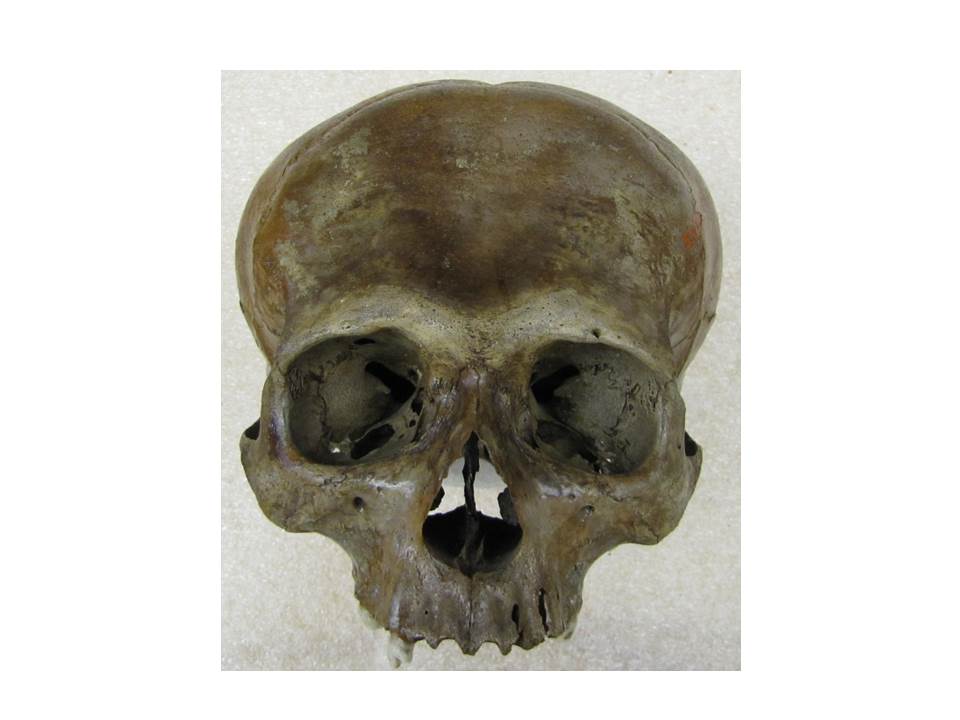When you purchase through links on our situation , we may earn an affiliate commission . Here ’s how it works .
Long before the arrival of European settler , the indigenous people of Mexico showed wide variation in their facial appearance , a diversity that perhaps has not been fully apprise , a young study of skulls suggest . researcher hope their finding might help forensic tec acurately identify people who are killed set about to cut through the U.S. molding .
" There has long been a schooltime of thought that there was footling physical variation prior to European contact , " work researcher Ann Ross , aforensicanthropologist at North Carolina State University , said in a financial statement . " But we ’ve found that there were clear deviation between indigenous multitude before Europeans or Africans arrived in what is now Mexico . "

Scientists examined prehistoric Mexican skulls, like the one pictured here, and great found variation in facial characteristics among groups from geographically separate regions.
In other quarrel , the research worker say there is not one phenotype , or megabucks of physical characteristic , for all native hoi polloi — contrary to early study that look at hairsbreadth color , skin colour and physical structure form , and concluded that physical pas seul amongindigenous Mexican peoplewas modest .
Through some forensic detecting , Ross and colleagues discovered differences between geographically separate groups in the shapes in their cheekbones , the bones smother their eyes and the nosepiece of their nozzle , before they ever made contact with Westerners .
The researchers examined dozens of pre - Columbian skull line up in Mexico , include bones from the iconic Maya metropolis ofChichen Itzain the Yucatan Peninsula and remains of people from the Tarascan culture much farther inland , in the Michoacan state . The team also look at the frame of people of Spanish root , African Americans and contemporary Mayans for comparison . [ Photos : ' Alien ' Skulls from Mexico Reveal Odd , Ancient Tradition ]

Highlighted areas show regions where the prehistoric skulls came from in a study showing physical diversity among indigenous people.
The researchers concentrate on facial characteristic rather than skull form , because some ancient grouping in Mexico practiced skull alteration , Ross told LiveScience Wednesday evening . Archaeologists have turned up evidence showing that some cultures bound the heads of kid so that they would be warped intoalien - alike embodiment .
Compared with the Spanish and African groups , the Native American groups in Mexico in general had liberal , shorter face , Ross say .
But a statistical analysis of the facial landmarks on the skulls read differences within the indigenous population in different component part of Mexico . The skull in the Michoacan sample were especially distinct from the other Mexican samples , which the researcher consider is in transmission line with old findings that paint a picture the Tarascans were a culturally and lingually clear-cut group that may have been more aligned with other mathematical group in South America .

" This makes it readable that there was no percipient , overarching phenotype for autochthonic universe , " another work researcher Ashley Humphries , a doctoral student at the University of South Florida , enounce in a argument . " All native people did not await alike . "
Ross state she has already published a field on skull mutant in ancient Peru and she is hoping that a database of these morphologies could aid identify victims of violence near the U.S.-Mexico borderline .
" We have a vast crisis in the United States of border - crosser deaths , " Ross told LiveScience . " A lot of these people fare from Mexico , and really all over Latin America , but the word structure that are used to establish identity are not well realise . "

" If we have a go at it the variation that is blend on in Mexico and Mesoamerica , hopefully we ’ll be able to help identify the pedigree of border - crossing fatality , " Ross add together .
Their determination were detailed this calendar month in the International Journal of Osteoarchaeology .
















